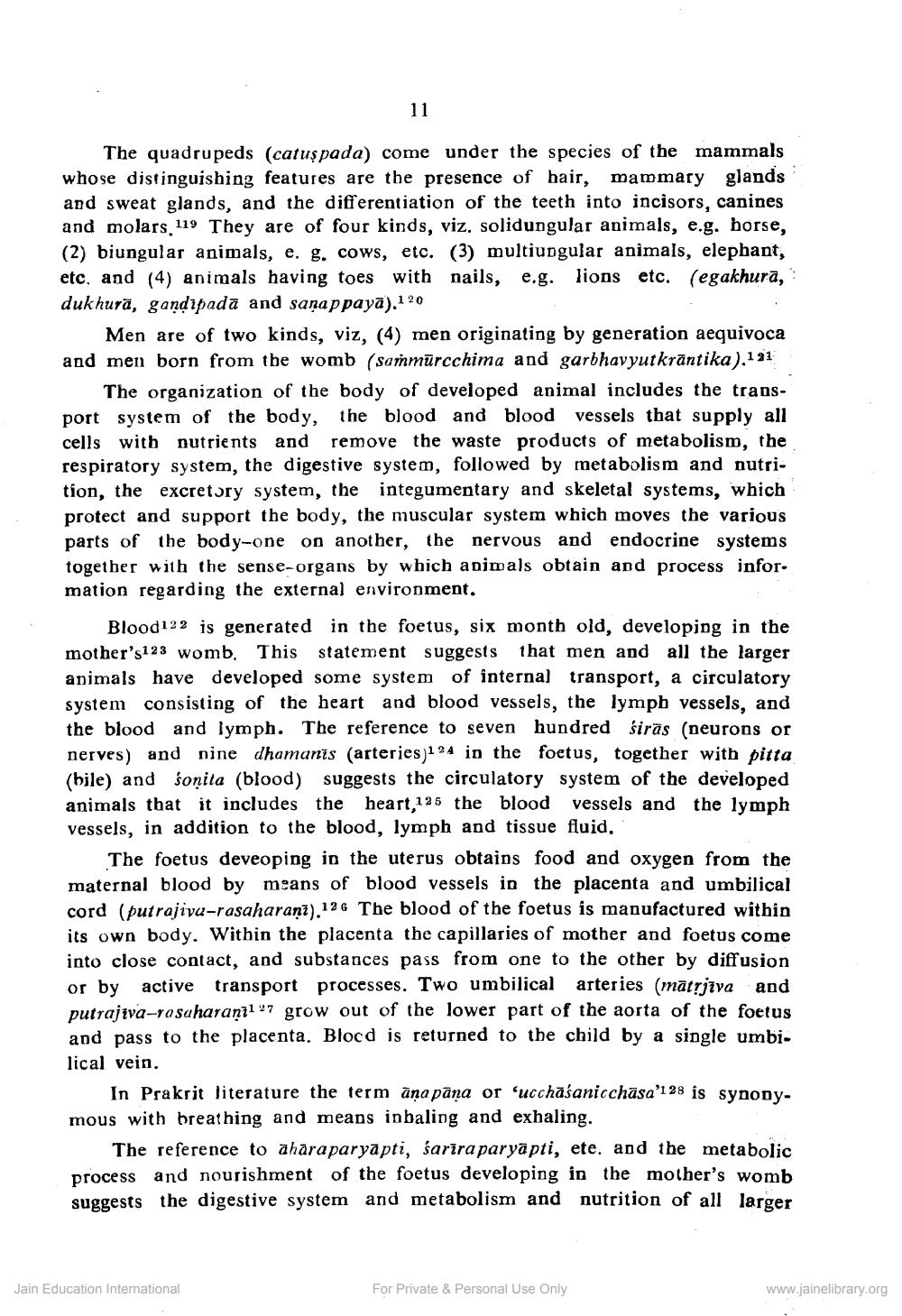________________
11
The quadrupeds (catușpada) come under the species of the mammals whose distinguishing features are the presence of hair, mammary glands and sweat glands, and the differentiation of the teeth into incisors, canines and molars. 119 They are of four kinds, viz. solidungular animals, e.g. horse, (2) biungular animals, e. g. cows, etc. (3) multiupgular animals, elephant, etc, and (4) animals having toes with nails, e.g. lions etc. (egakhura, dukhurā, gandipada and saņappaya).1 20
Men are of two kinds, viz, (4) men originating by generation aequivoca and men born from the womb (sañmūrcchima and garbhavyutkrāntika).131
The organization of the body of developed animal includes the transport system of the body, the blood and blood vessels that supply all cells with nutrients and remove the waste products of metabolism, the respiratory system, the digestive system, followed by metabolism and nutrition, the excretory system, the integumentary and skeletal systems, which protect and support the body, the muscular system which moves the various parts of the body-one on another, the nervous and endocrine systems together with the sense-organs by which animals obtain and process information regarding the external environment.
Blood122 is generated in the foetus, six month old, developing in the mother's123 womb. This statement suggests that men and all the larger animals have developed some system of internal transport, a circulatory system consisting of the heart and blood vessels, the lymph vessels, and the blood and lymph. The reference to seven hundred sirās (neurons or nerves) and nine dhamanīs (arteries)124 in the foetus, together with pitta (hile) and soņita (blood) suggests the circulatory system of the developed animals that it includes the heart, 125 the blood vessels and the lymph vessels, in addition to the blood, lymph and tissue fluid,
The foetus deveoping in the uterus obtains food and oxygen from the maternal blood by means of blood vessels in the placenta and umbilical cord (putrajiya-rasaharani).126 The blood of the foetus is manufactured within its own body. Within the placenta the capillaries of mother and foetus come into close contact, and substances pass from one to the other by diffusion or by active transport processes. Two umbilical arteries (mātrjiva and putrajıva-rasaharanil 27 grow out of the lower part of the aorta of the foetus and pass to the placenta. Blocd is returned to the child by a single umbilical vein.
In Prakrit literature the term āņa pāna or 'ucchāśanicchāsa’128 is synonymous with breathing and means in baling and exhaling.
The reference to ahāra paryāpti, śarīra paryapti, ete, and the metabolic process and nourishment of the foetus developing in the mother's womb suggests the digestive system and metabolism and nutrition of all larger
Jain Education International
For Private & Personal Use Only
www.jainelibrary.org




